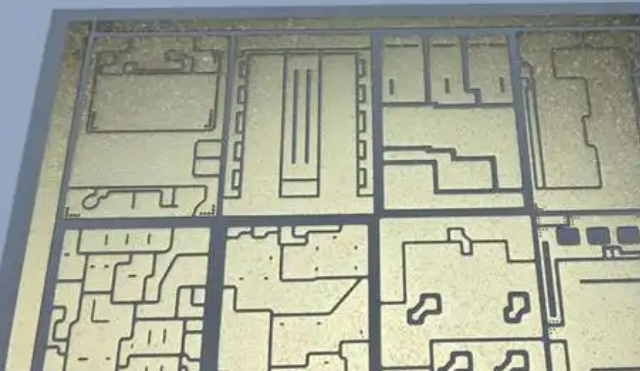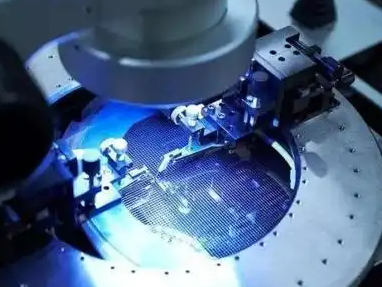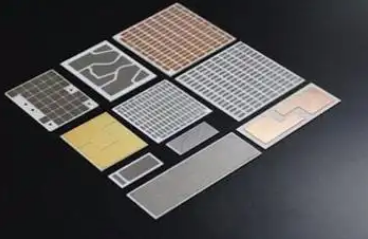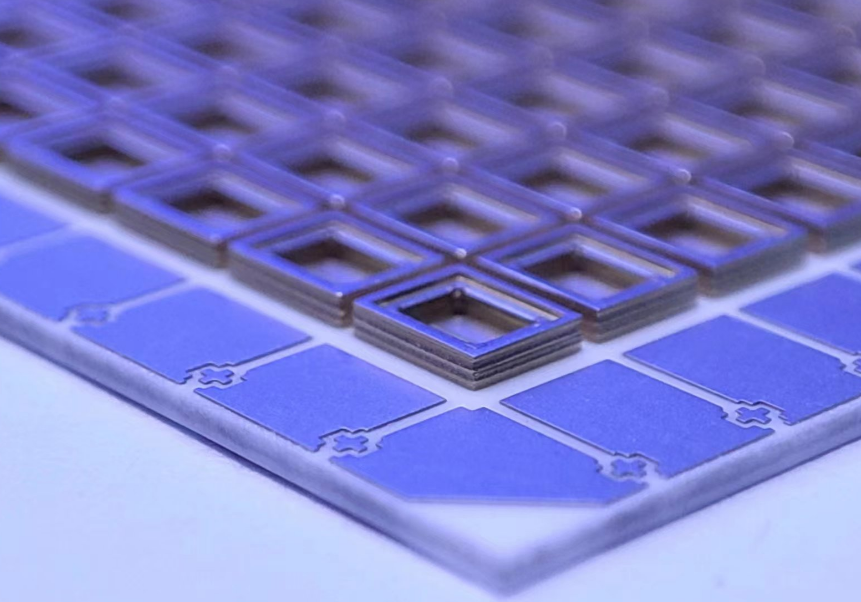Aluminum nitride performance is excellent in the semiconductor field
Aluminum nitride, a highly regarded material in the semiconductor field, stands out for its extremely wide band gap and huge exciton binding energy. It has a band gap of up to 6.2eV and is a direct band gap semiconductor, giving it unique electronic properties. In addition, aluminum nitride also shows many excellent physical properties, such as high breakdown field strength, thermal conductivity and resistivity, which make it continue to receive wide attention in the semiconductor field and become the goal of researchers.

Properties of aluminum nitride
Aluminum nitride, a crystal with covalent bonds as its main body, belongs to the category of hexagonal crystalline diamond-like nitrides. It has a theoretical density of 3.26 grams per cubic centimeter and a Mohs hardness of between 7 and 8, showing extremely high room-temperature strength. It is worth noting that its strength decreases at a relatively slow rate with increasing temperature, which makes aluminum nitride maintain excellent stability at high temperatures.
Compared with many ceramic materials, aluminum nitride exhibits excellent comprehensive properties, especially its excellent thermal conductivity, making it an ideal choice for semiconductor substrates and structural packaging materials. Therefore, aluminum nitride has great application potential in the electronics industry. Next, we will delve into the key performance parameters of aluminum nitride.

In the development and application of electronic devices, the optimization of heat dissipation performance is an indispensable part. Aluminum nitride (AlN) has attracted much attention for its excellent thermal conductivity, with a theoretical thermal conductivity of up to 320W·m-1·K-1, making it an ideal heat dissipating material. It is worth noting that the purity of AlN powder has a significant impact on its thermal conductivity, and a slight increase in purity will lead to a significant increase in thermal conductivity, and its thermal conductivity can be increased by 30% for every 1% increase in purity. However, high thermal conductivity is not only a significant advantage of aluminum nitride, but also brings no small technical challenges.
The thermal conductivity of AlN is affected by many factors such as raw material purity and sintering process. In practical applications, due to the inevitable impurities and defects in AlN, the thermal conductivity of its products is often lower than the theoretical value. Especially in the process of AlN single crystal growth, impurities in the raw material (especially oxygen and carbon) will enter the inside of the single crystal, forming various defects, which seriously affect the quality and properties of the crystal. In particular, oxygen has a strong affinity with AlN, which is easy to enter the AlN lattice to cause defects and become a key factor in reducing the thermal conductivity of materials. These complex factors make the development and application of aluminum nitride challenging.

Preparation technology of aluminum nitride powder
There are many methods for preparing aluminum nitride powders, including direct nitriding, carbothermal reduction, self-propagating, plasma, chemical vapor, solution and high-energy ball milling. Each of these methods has its own characteristics, which method to choose mainly depends on the actual needs and experimental conditions.
Comparison of common techniques and advantages and disadvantages of aluminum nitride powder preparation
In the field of preparation of aluminum nitride powder, carbothermal reduction method stands out with its significant advantages, occupying nearly half of the market share. It is followed by direct nitriding and self-spreading, which have also been industrialized, accounting for 26% and 12% respectively. However, the solution method, chemical vapor phase method and plasma method and other technologies in the synthesis of nano-aluminum nitride performance is excellent, but limited by the difficulty of large-scale production, it is still mainly in the laboratory stage, industrial applications still need time, so its overall proportion is relatively low, only 3%-5%. As for the high-energy ball milling method, although the synthesized aluminum nitride powder has unique properties in some aspects, due to its limited production, it is usually only used as an auxiliary means of other preparation technologies, accounting for only 1%.

Application of aluminum nitride in semiconductor field
With the rapid progress of microelectronics and semiconductor technology, motors and electronic components are increasingly developing towards miniaturization, lightweight, high energy density and high power output. This trend has led to a significant increase in the heat flux of the electronic substrate, and as a result, the technical challenge of maintaining a stable operating environment inside the device has become increasingly prominent. In this context, AlN ceramics, with their excellent thermal conductivity, thermal expansion coefficient similar to silicon, high mechanical strength, excellent chemical stability, and environmentally friendly and non-toxic properties, are regarded as the ideal choice for the next generation of thermal substrates and electronic device packaging.
Aluminum nitride ceramic substrate is emerging in the semiconductor field with its unique advantages. Compared with Al2O3 ceramic substrate and Si3N4 ceramic substrate, AlN ceramic substrate shows significant advantages. Its excellent insulation performance is derived from the AlN ceramic layer in the middle of the substrate, which has an effective insulation voltage of more than 2.5KV, significantly improving the insulation capacity of the module. At the same time, the aluminum nitride ceramic substrate also has good thermal conductivity, and its thermal conductivity can reach 170-260W/mK, which provides strong support for the heat dissipation of the chip.

In addition, the expansion coefficient of the AlN ceramic substrate is similar to that of silicon, thus avoiding the risk of stress damage to the chip. Its stripping resistance exceeds 20N/mm², demonstrating excellent mechanical properties. Moreover, the aluminum nitride ceramic substrate also has excellent corrosion resistance and stability, is not easy to deformation, and can work normally in a wide temperature range.
In semiconductor processing, the heat dissipation of silicon wafers is very important. If the uniform temperature of the wafer surface cannot be ensured, the processing uniformity and accuracy of the wafer will be directly affected. Therefore, the AlN ceramic substrate, with its excellent heat dissipation and mechanical properties, has become an indispensable key component in semiconductor processing.
Aluminum nitride electrostatic sucker, from the exquisite technology of NTK, shines in the semiconductor field with its unique advantages. As the main material, aluminum nitride can not only obtain a wide temperature range and strong adsorption force by accurately controlling the volume resistivity, but also ensure product quality due to the integrated co-firing molding technology. In plasma halogen vacuum atmospheres, it can operate consistently and stably, withstanding the most demanding process environments in semiconductors and microelectronics, while providing stable adsorption and excellent temperature control.
In addition, AlN crystals also show excellent performance in the field of substrate materials. It is ideal for GaN, AlGaN, and AlN epitaxial materials, with higher thermal matching and chemical compatibility and less stress between epitaxial layers than sapphire or SiC substrates. Therefore, in the preparation of high temperature, high frequency and high power electronic devices, AlN crystal as GaN epitaxial substrate can significantly reduce the defect density of devices, improve the performance of devices, and show broad application prospects. At the same time, it is also suitable for AlGaN epitaxial material substrates with high aluminum (Al) components, which can effectively reduce the defect density in the nitride epitaxial layer, thereby greatly improving the performance and life of nitride semiconductor devices. High quality solar blind detectors based on AlGaN have been successfully applied in many fields.
As a thin film material, aluminum nitride exhibits many excellent physical and chemical properties due to its wide band gap and strong polarization characteristics. The prepared aluminum nitride film material has the characteristics of high breakdown field strength, high thermal conductivity, high resistivity and good chemical and thermal stability, and is often used as an isolating medium and insulation material in the packaging of electronic devices and integrated circuits. At the same time, high quality AlN films also show broad application prospects in the fields of machinery, microelectronics, optics and surface acoustic wave device manufacturing and high frequency broadband communication.
Although aluminum nitride film has many advantages, its preparation process still faces challenges such as complex equipment, high cost and difficult commercialization. At present, the method of low temperature preparation of aluminum nitride film is not mature, and the development of integrated optical devices requires film preparation at lower temperatures to avoid thermal damage to the substrate material. Therefore, a lot of research work is still needed to further improve the preparation method of aluminum nitride film to obtain more dense, uniform, high purity and low cost products at lower temperature and simple process conditions.